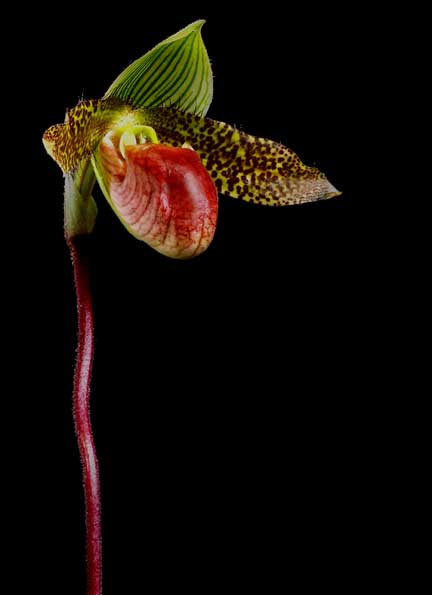That is little more than a sadistic way to kill a beautiful orchid while "donating" your money to the store and the promoter.
Phalaenopsis orchids live in a rain forest and ice on the roots will kill your orchid!!
Just read this article and you'll learn how orchids grow in nature and it isn't anywhere near a freezer!
Orchids
*** SPECIAL GROWING INSTRUCTIONS FOR "PAPHS"
There are approximately 60 actual species of Paphiopedilum (paf-e-o-pe-DIL-um) orchids. These orchids are found in nature in SE Asia, Southern India, New Guinea and the Philippines. Few of those species are available for sale since excessive collection from the wild has placed an undue strain on the environment. As a result, this group of orchids is the subject of environmental protection in many tropical locations.
 The majority of "paphs"
or "Lady Slippers available for sale are hybrids. We only collect hybrid paphs. The portion directly above the pouch (which is a petal) is called
the dorsal sepal and is normally both large and showy. The lateral sepals
are fused into a "synsepal" and are usually small and somewhat hidden
behind the runway petal which is shaped as a pouch. The plant's pollen is
contained in this pouch where the plant encourages insects to enter and
thus carry the pollen to other plants for further propagation. The shape
of the pouch gives the plant its common name of "Lady Slipper orchid"
since it resembles a delicate lady's shoe.
The majority of "paphs"
or "Lady Slippers available for sale are hybrids. We only collect hybrid paphs. The portion directly above the pouch (which is a petal) is called
the dorsal sepal and is normally both large and showy. The lateral sepals
are fused into a "synsepal" and are usually small and somewhat hidden
behind the runway petal which is shaped as a pouch. The plant's pollen is
contained in this pouch where the plant encourages insects to enter and
thus carry the pollen to other plants for further propagation. The shape
of the pouch gives the plant its common name of "Lady Slipper orchid"
since it resembles a delicate lady's shoe.
The plants live very well as house plants since they enjoy medium light levels. Many do not appreciate cold temperatures so keep them away from drafts and well away from cold windows.
Since Paphiopedilum orchids do not have a pseudobulb in which to retain water they should be planted in an "epiphytic compost" which retains water well. Recently most commercial growers are using a mixture of coconut chips, fir or pine bark and perlite (sometimes known as sponge rock). The percentages vary depending on your climate, more coconut when there is a quick drying climate and moisture retention is important. The media needs to be changed when the bark begins to breakdown and the potting mix begins to get waterlogged.